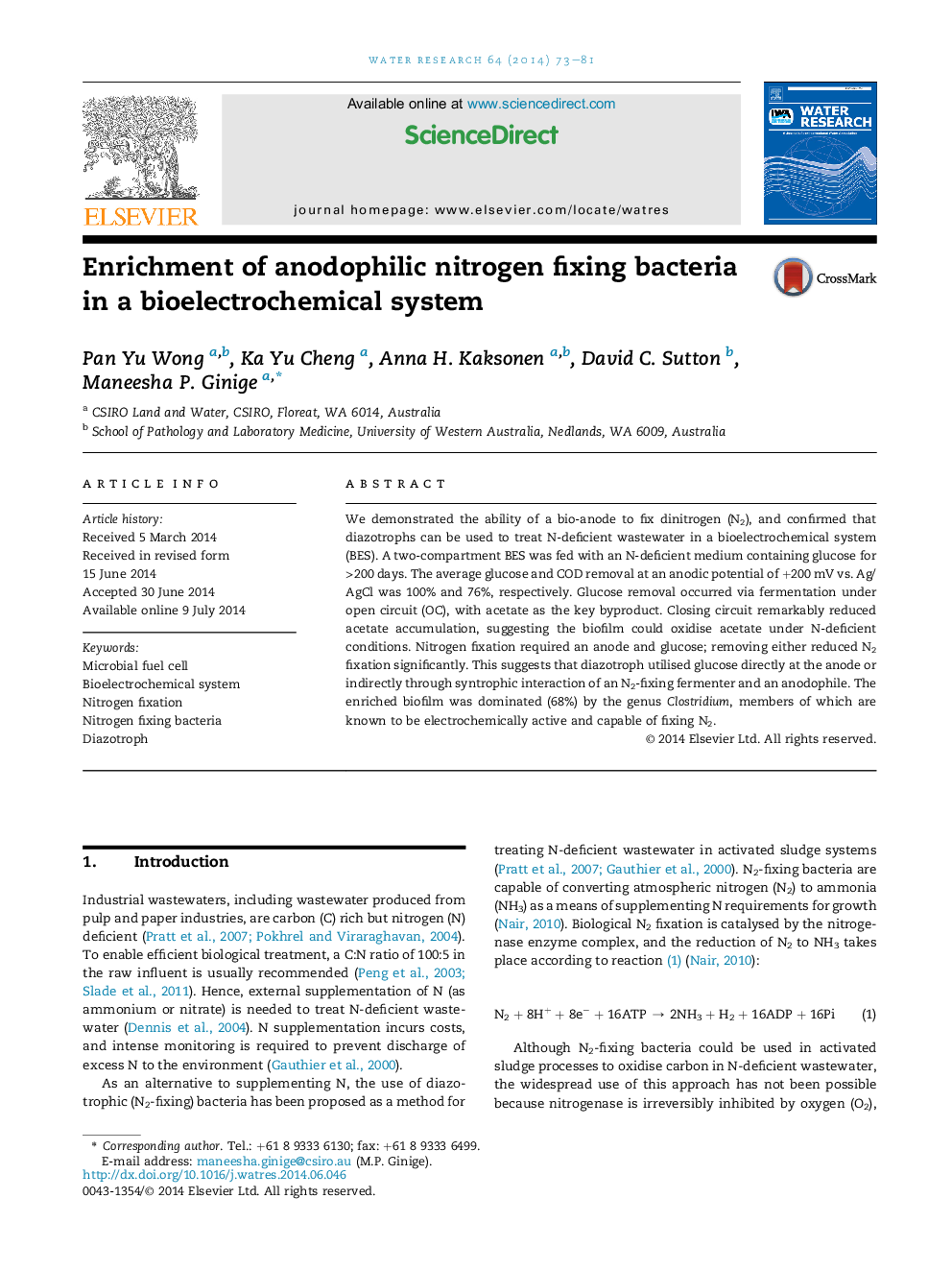| Article ID | Journal | Published Year | Pages | File Type |
|---|---|---|---|---|
| 4481431 | Water Research | 2014 | 9 Pages |
•Nitrogen deficient wastewater was treated using a bioelectrochemical system.•Good carbon removal efficiency was achieved.•Anode-depended nitrogen fixation was proven using acetylene reduction assay.•Microbial analysis confirmed the presence of nitrogen fixing bacterial genera.
We demonstrated the ability of a bio-anode to fix dinitrogen (N2), and confirmed that diazotrophs can be used to treat N-deficient wastewater in a bioelectrochemical system (BES). A two-compartment BES was fed with an N-deficient medium containing glucose for >200 days. The average glucose and COD removal at an anodic potential of +200 mV vs. Ag/AgCl was 100% and 76%, respectively. Glucose removal occurred via fermentation under open circuit (OC), with acetate as the key byproduct. Closing circuit remarkably reduced acetate accumulation, suggesting the biofilm could oxidise acetate under N-deficient conditions. Nitrogen fixation required an anode and glucose; removing either reduced N2 fixation significantly. This suggests that diazotroph utilised glucose directly at the anode or indirectly through syntrophic interaction of an N2-fixing fermenter and an anodophile. The enriched biofilm was dominated (68%) by the genus Clostridium, members of which are known to be electrochemically active and capable of fixing N2.
Graphical abstractFigure optionsDownload full-size imageDownload high-quality image (203 K)Download as PowerPoint slide
